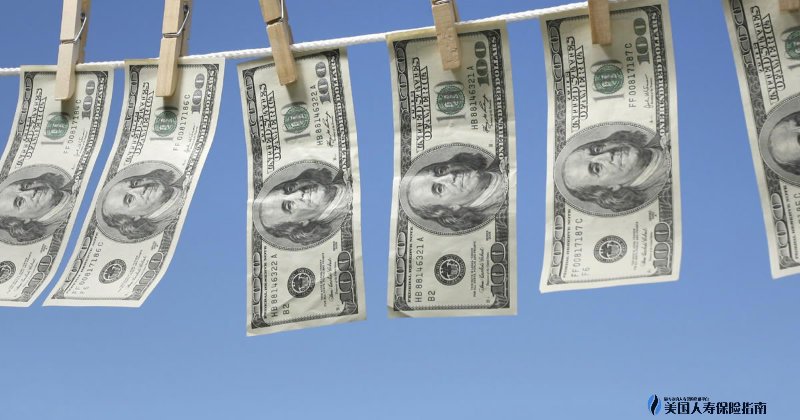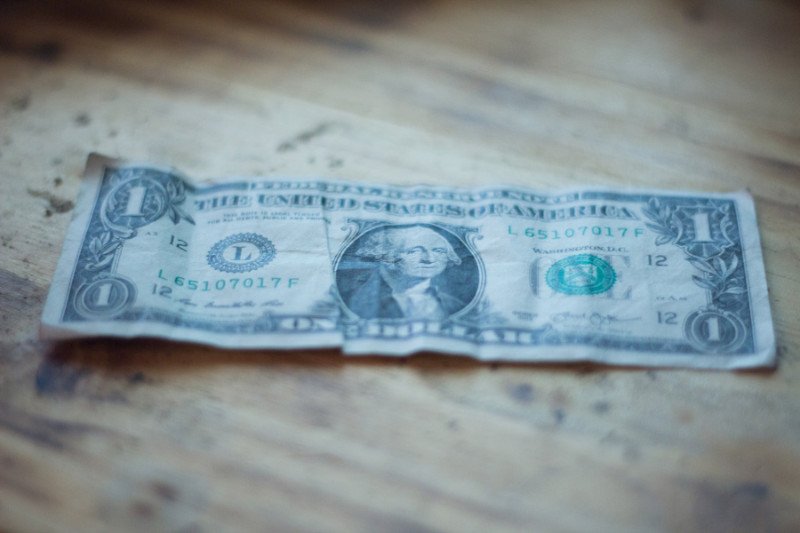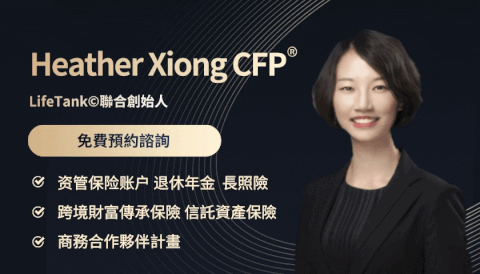(美国人寿保险指南网)在“LIMRA 2018市场报告:美国人买了什么保险?”一文中,在上个世纪50年代出现的储蓄分红型人寿保险(Whole Life)品类,依然占据了美国个人人寿保险市场36%的份额。在接下来的一系列文章中,我们将开始2018年的年终保险公司盘点,评选出最具有现金价值的5家提供储蓄分红型人寿保险(Whole Life)产品的美国人寿保险公司。

我们的评选,聚焦在“现金价值增长”这个目标上。所以,在开始评选之前,我们先对“现金价值”进行说明,并陈述我们选择人寿保险公司的基本标准。
什么是储蓄分红型人寿保险的“现金价值”?
储蓄分红型人寿保险(Whole Life),是终身型人寿保险产品中的一类产品。 保险公司向投保人保证,提供有保证的身故赔偿金,保证的固定保费,以及保证的“现金价值”增长。
“现金价值”伴随着储蓄分红型人寿保险保单而生效。想象一下,这个“现金价值”部分,就像一个储蓄账户,是您在保险公司那里开设的。您可以随时查看这个账户。 我们说这是一个“储蓄账户”,是因为里面的现金价值,只会上涨。 它从不上下波动。
正是因为“现金价值”的存在,使得具备这个功能的人寿保险保单,成为对我们有吸引力的资产。

储蓄分红型人寿保险如何实现“现金价值”的增长?
绝大多数储蓄分红型人寿保险,通过两个方面来增长“现金价值”部分,这两个部分分别是:保证收益率和非保证收益率。
保证收益率是各保险公司保证给出到投保人的固定收益率。 非保证收益率包括保单参与分红的保险公司给出的分红。这个非保证的分红利率,加上保证收益率,就是保单的整体收益。
*分红利率(Dividend Interest Rate ,DIR)并非保单回报率、保单收益率,或保单现金值收益率。 它是根据金融保险公司的财务情况,由保险公司单方面按年份来决定的。分红收益率可以改变,并不保证是否有分红,分红有多少。
举例说明:
某人寿保险公司,储蓄分红型保单产品,给出的保证收益率为:4%,当年分红的利率为1.8%。那当年,此人当年的整体收益是:现金值部分保证的4%的收益,以及保险公司给出的1.8%的分红。
其他快速增长现金价值的方法
您可以通过尽快付清您的保单,来获取更快速的“现金价值”增长。我们接下来评选出来的保险公司都接受提前付清的方式。
10-Pay 方案保单
最传统的终身寿险保费支付方案是,活多久,付钱就付多久。这种方式完全不利于现金值的增长。但如今的储蓄分红型人寿保险,可以实现提前付清。在美国相关法律的框架下, 最适合“现金价值”积累和增长的保单支付方案被称为“10-Pay”。这意味着,您只需要支付10年的保费,就可以获得终身保障了。

如何提取储蓄分红型人寿保单里的“现金价值”?
储蓄分红型(Whole Life)保单里的现金价值,通常有以下三种提取方式:
- 向保单贷款(Loan)
- 分发(Distribution)
- 提取分红(Dividend)
从这类保单里拿钱,最常见的是通过“向保单贷款”的方式。 这些贷款无需强制偿还。 因为储蓄分红型人寿保险,提供了一个身故赔偿金,如果你不幸死亡,未偿还的贷款金额,将从身故赔偿金中扣除。
通过“向保单贷款”的方式拿钱的另一个优势是,当您从保单中贷款时,您不必为该贷款纳税。
保险公司是否提供了更优的现金值增长策略?
为了评选出对现金值的增长,提供最快轨道的保险公司,我们不能简单比较持续固定地交保费的增长情况。
在现实生活中,我们在人生的不同阶段,往往会需要从保单中拿钱出来,应对和度过不同的状况。在这个时候,我们就要充分评测从保单中拿钱出来的时候,这类保单还有什么样的现金值增长策略。在这里,我们要特别说明以下这个非常重要的概念。
不直接计入(Non Direct) Vs. 直接计入(Direct Recognition)
所有储蓄分红型人寿保险(Whole Life)的保单合同,可以分为两类:
- 直接计入型(Direct Recognition)
- 不直接计入型(Non Direct Recognition)
在评测和选择储蓄型万能险保单产品的时候,这是判断的一个重要指标。这决定了,当按照合同约定的借贷方式,从保单拿钱出来的时候,这种借贷方式对保单里现金价值的影响。
“不直接计入型”的储蓄型万能险保单里的借贷方式,跟指数型万能险保单的Variable Loan的借贷方式很相似——当您从保单中拿钱后,这笔钱不计入现金值进行扣除,保单依旧未取钱时候的现金值金额进行分红。因此,“不直接计入型”的储蓄型万能险保单产品,能提供更好的现金价值增长。
在我们评测多家保险公司的时候,并不是简单地把现金值的增长挂钩到谁家分红最多这个单一因素上。一家“直接计入型”人寿保险公司,即使向投保人提供了更高的现金值分红或股息,在现实中您可能拿到手的钱反而会更少。因此,要充分考虑这个因素。
这家保险公司是互惠型保险公司吗?
如果你不知道该选什么保险公司的时候,请总是选择一家互惠型(Mutual)的保险公司。
在现实世界里,最有价值的储蓄分红型人寿保险产品,都是由互惠型保险公司承保的。
互惠型保险公司直接向保单持有人支付分红,这类保单称为“参与型保单(Participating policy)。
上市公司类型的保险公司跟互惠型保险公司不同的一点是,上市公司的收益和分红,先要给股票持有人,剩余的才可能给到保单持有人。这是由公司性质决定的,以下是加州保险法定义的两类公司的区别:
- 上市公司由公众投资者拥有,投资者提供资金,享受收益和承担损失;上市公司的目标是,为投资者获取利益。
- 互惠型保险公司由所有保单持有人共同拥有,享受收益或承担损失;互惠型保险公司的目标是,以最低成本向公司所有者,即保单持有人,提供保险产品。
因此,对于上市公司来说,为了安抚华尔街和短期投资者,经常做出针对季度财报的财务决策。 而互惠公司没有这些潜在的利益冲突,倾向于长期稳定的决策。
而根据美国的保险法,一些州明确规定, 互惠型保险公司必须把超过储备金10%以上的盈利, 全额以红利的形式支付与客户。去年上半年发生的宾州互惠人寿(Penn Mutual)以$1,100,000,000 的天价与投保人和解一案,就是保护互惠型公司保单持有人的一个案例。
所以,美国人寿保险指南网总是推荐互惠型保险公司。我们评选出的5家保险公司,无一例外,全是互惠型保险公司。
综述
在下一篇文章中,我们将针对储蓄型分红型保单,根据保险公司本身的信用评级,历史分红收益率数据,当前分红收益率数据,现金值表现等标准考量,公布由美国人寿保险指南网选出的“2018年储蓄分红型保单表现最好”的5家美国人寿保险公司。
请点击文章下方的评价给本文打分,同时在点击下面分享按钮,分享本文到您的社交网络,让更多身边的朋友了解美国人寿保险产品相关知识。



